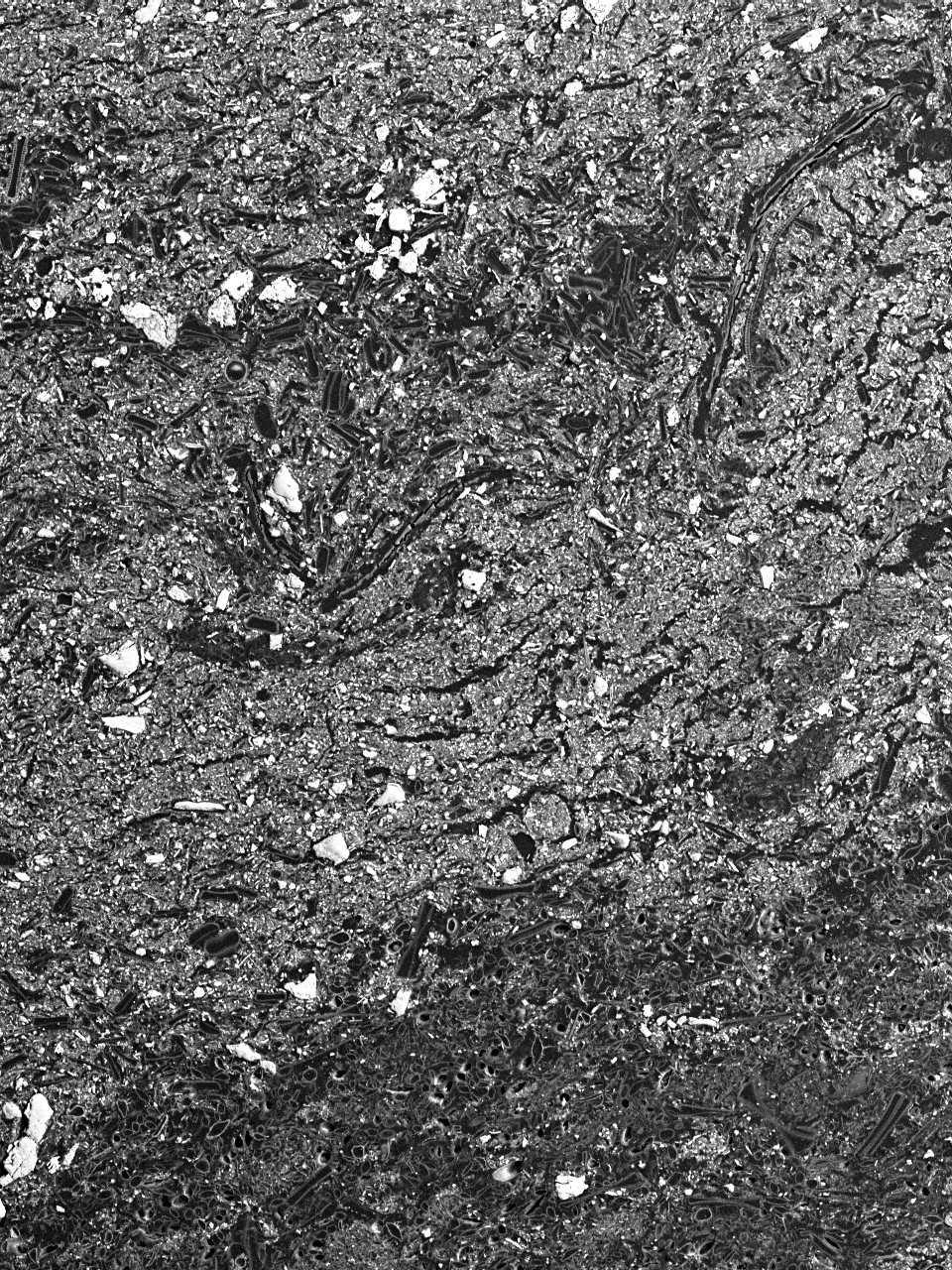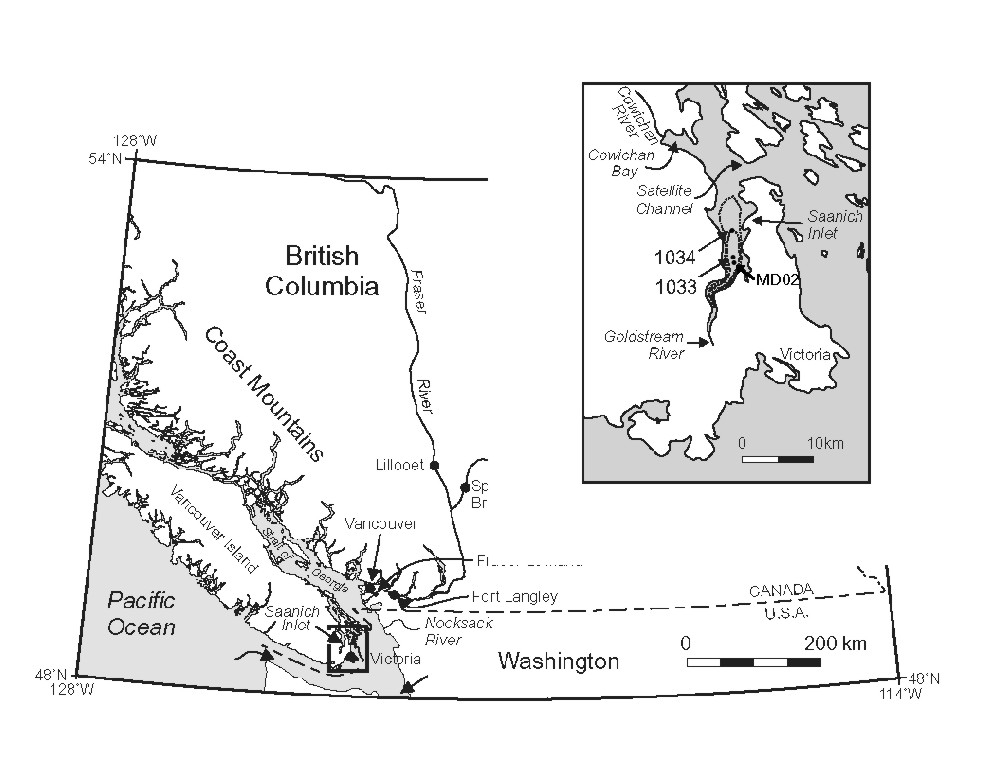
Fig. 2 Map of southern British Columbia and northwestern Washington. Inset map of Saanich Inlet shows the location of the ODP
cores (site 1033, leg 169S) and the IMAGE VIII core (MD02-2490).

Return to Current Research Projects
Ph.D. Candidate: Kinuyo Kanamaru
Advisor: Raymond S. Bradley
Co-advisor:
Pierre Francus
Institut National de la Recherche Scientifique, Centre Eau, Terre et Environnement, 490 rue de la Couronne, Québec, Québec G1K 9A9, Canada
The project investigates atmosphere-ocean-land interactions using laminated marine sediments in Saanich Inlet, British Columbia over the last 10,000 yrs. In particular, I focus on variations in sediment fabric as a direct impact of atmospheric variability. Image analysis techniques (Francus, 1998; Francus 1999; Francus et al., 2002) will be applied to sediment thin-sections to examine changes in grain size (Fig.1). I will also perform stable isotope analysis (d13C and d14N), elemental analysis (TOC, TC, and TN) and geochemical analysis by X-Ray Fluorescence Spectroscopy.
Saanich Inlet is a 250 m deep fjord with a sill at the mouth on southeastern Vancouver Island (Fig. 2). The restriction of deep-water renewal by the sill, coupled with high surface-layer productivity (e.g. Gucluer and Gross, 1964), preserves seasonally laminated sediments (e.g. Gross et al., 1963). Therefore, these sediments have the potential to preserve detailed climatic and oceanographic changes with extremely high resolution (e.g. Dean and Kemp, 2004). In addition, previous studies have shown sediment fabric can be a strong indicator of ENSO, PNA, and PDO conditions in the late Holocene (e.g. van Geen et al., 2003; Dean and Kemp, 2004; Patterson et al. 2005).
However, because middle to early Holocene sediment is increasingly disturbed (Bornhold, Firth, et al., 1998), conventional lamina thickness does not provide a direct climate signal. Total varve thickness is the result of the accumulation of various phenomena, such as terrigenous sedimentation and primary productivity. In addition, atmospheric circulation affects physical stresses, such as surface wind and surface ocean hydrology, and hence directly influences sedimentation mechanisms. Several studies have reported that the solar activity cycle influences the location of atmospheric pressure gradients (Christoforou and Hameed, 1997), surface winds (Bond et al., 2001), and primary productivity as it is recorded in late Holocene sediments (Patterson et al., 2004). These studies also suggest that ocean currents may provide a mechanism to amplify solar signals and transmit them globally. The IMAGE VIII core from Saanich Inlet presents an opportunity to study seasonal to annual resolution records from selected intervals in the Holocene. The goal is to detect short-term regional climate variability and find teleconnections with reconstructions from other regions. This project will help produce a better understanding of how atmospheric circulation impacts oceanic circulation, which in turn affects sedimentation.
References
Bond, G., Kromer, B., Beer, J., Muscheler, R., Evans, M.N., Showers, W., Hoffmann, S., Lotti-Bond, R., Hajdas, I., and Bonani, G., 2001. Persistent solar influence on North Atlantic climate during the Holocene. Science. 294: 2130-2136.
Bornhold, B.D. and Firth, J., 1998. Proc. ODP, Init. Repts., 169S. College Station, TX (OceanDrilling Program).
Christoforou, P. and Hameed, S., 1997. Solar cycle and the Pacific ‘centers of action’. Geophysical Research Letter. 24: 293-296.
Dean, J.M. and Kemp A.E.S., 2004. A 2100 year BP record of the Pacific Decadal Oscillation, El Nino Southern Oscillation and Quasi-Biennial Oscillation in marine production and fluvial input form Saanich Inlet, British Columbia. Palaeogeography, Palaeoclimatology, Palaeoecology. 213: 207-229.
Francus P., Bradley R., Abbott M., Keimig F. and Patridge W., 2002. Paleoclimate studies of minerogenic sediments using annually resolved textural parameters. Geophysical Research Letters. 29, 20: 1998.
Francus, P., 1998, An image-analysis technique to measure grain-size variation in thin sections of soft clastic sediments, Sedimentary Geology, 121, 289-298.
Francus, P., 1999, Using analysis to estimate quantitatively some microstructural parameters of detrital sediments, Geologica Belgica, 173-180.
Gross, M.G., Gulcher, S.M., Creager, J.S. and Dawson, W.A., 1963. Varved marine sediments in a stagnant fjord. Science 141: 918-919.
Gucluer, S.M. and Gross, M.G. 1964. Recent marine sediments in Saanich Inlet, a stagnant marine basin. Limnology and Oceanography 9: 359-376.
Patterson, R.T, Prokoph, A. and Chang, A.S., 2004. Late Holocene sedimentary response to solar and cosmic ray activity influenced climate variability in the NE Pacific. Sedimentary Geology. 172: 67-84.
van Geen, A., Zheng, Y., Bernhard, J.M., Cannariato, K.G., Carriquiry, J., Dean W.E., Eakins, B.W., Ortiz, J.D., and Pike, J., 2003, On the preservation of laminated sediments along the western margin of North America. Paleoceanography. 18: 1098-1114.
Fig. 1 An example of a scanning electron microscope (SEM) image of a sediment thin-section. The lighter lamina is rich in
mineral grains, and the darker lamina is rich in diatoms.
Fig. 2 Map of southern British Columbia and northwestern Washington. Inset map of Saanich Inlet shows the location of the ODP
cores (site 1033, leg 169S) and the IMAGE VIII core (MD02-2490).


Return to Current Research Projects